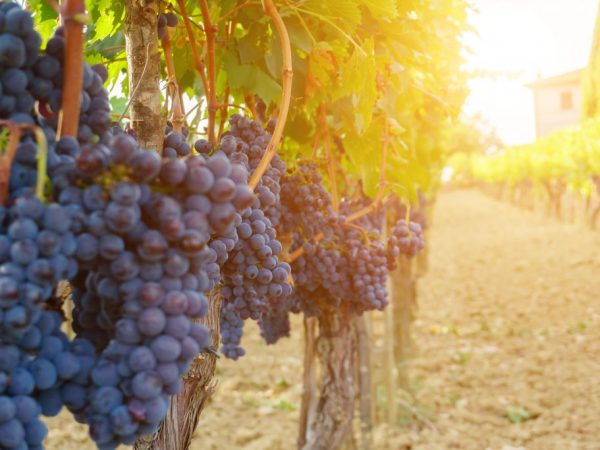Description of the Venus grapes
People were engaged in vineyards in ancient times, such a useful and tasty fruit was relevant especially in Ancient Greece and Babylon. The Venus grape is an excellent species for wine lovers and simply lovers of ripe and juicy grapes. This variety is unpretentious in cultivation and care.

Description of the Venus grapes
general characteristics
The Venus grape variety was bred in North America in the 60s and 70s of the last century and is still popular among gardeners around the world.
This is an unpretentious plant: in winter it does not require special care and easily tolerates frost. Differs in productivity and early maturity. Suitable for growing in central Russia, where the climate is not as flexible as in the south.
Plant features
According to the description, the Venus grape has strong, open branches, above average growth. Leaves are light green, medium-sized, strong trunk.
The berries on a bunch of grapes are located tightly to each other, have a rounded shape. The weight of one bunch is from 300 to 700 g.
- fruits are dark blue, with white bloom;
- sugar-containing 20%;
- has a pleasant aroma with notes of nutmeg and strawberry;
- the pulp is juicy, has no seeds;
- the skin is soft, pleasant to the taste.
The harvest begins in August, the fruits have the peculiarity of enduring rainy and dry weather. The berries do not crack when the weather conditions change, they are well transportable.
Growing
The Venus variety is preferably grown on sandy loam soil made of clay and sand. The correct placement of the shrub is important, in view of its tendency to overload in clusters, therefore it is necessary to plant it with the possibility of flying around.
Landing
Planting is carried out in the spring, for this you will need to prepare a place in advance.
- Prepare a hole for planting in the fall: dig a hole up to 70 cm deep, cover the bottom with layers of rubble and broken bricks.
- Cover with a layer of soil mixed with superphosphate.
- Carry out watering to settle the pit.
With the arrival of spring, fill the prepared hole with soil by 30 cm and pour abundantly with water. After absorbing moisture, plant a seedling so as not to damage the rhizome, while straightening it. Now we fill the hole with soil to the brim.
Care

The plant needs daily watering
Water every day. The planting site requires mulching with straw, which will allow the seedling to retain moisture for a long time. It is possible to apply mineral fertilizers based on a decoction of herbs and calcium.
In the second decade of August, the crop should grow about 2-2.5 m in height, and the next year it will bring the first harvest.
Diseases and pests
Venus is susceptible to disease and pests.
Diseases are:
- infectious - rot;
- not infectious - fungi.
Diseases and harmful insects can lead to wilting of the plant, loss of part of the crop. In the fight against diseases and insects, it is important not only to treat the presence of a problem, but also to prevent it, which will help preserve the crop and the plant itself.
Fight disease
Grape anthracnose is caused by a fungal pathogen and causes the plant to decline - this is the appearance of brown spots on the leaves and the death of the lashes. In the fight against the fungus, prevention will help, which consists in choosing resistant varieties. The elimination of the fungus is carried out using the chemicals of the contact group.
Powdery mildew is a putrefactive disease that affects the leaves. The appearance of oily, with a white bloom of spots indicates a disease of the plant. In order to avoid such diseases, the shrub should be treated with a copper solution.
Pest control
Phyloxera is a dangerous pest that attacks the leaves of grapes, has a yellow color and small size, so it is difficult to notice. In places where the pest lives, you can see leaf swelling - the slow destruction that the insect produces. To prevent the invasion of Phyloxera, vineyards are planted in sandy or clayey soil.
The spider mite settles on the lower part of the leaf and sucks out all the nutrients from it, thereby preventing the plant from functioning normally. In preventive measures, in the fight against ticks, irrigation with a solution of copper sulfate or Bordeaux liquid is used.
Conclusion
Growing Venus grapes is easy. The culture is winter-hardy and is suitable for placement in summer cottages in regions with a temperate climate.
A high yield rate, sophistication of the taste of dark blue berries will not leave indifferent any grape lover. The variety is indicative of its versatility in use and unpretentious care.


